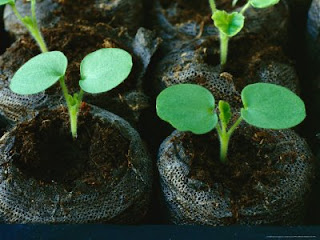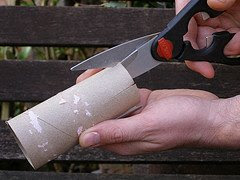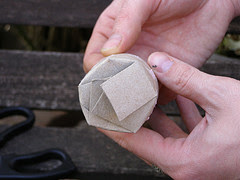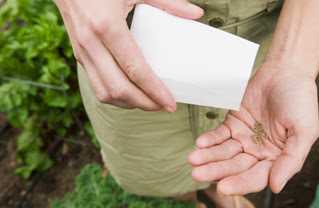

Materials:
Desired Seeds
Spray bottle
Containers
Seed-starting soil
Desired Seeds
Spray bottle
Containers
Seed-starting soil
Containers:
Gardeners have the choice of separate pots for each plant or flats holding many plants. The choice depends on various factors including your space limitations and the fragility of your desired plants.
Use separate pots or plug trays for most of my plants because there is less of a chance of damaging roots when transplanting. However, trays may be the more practical choice for lettuce, spinach, kale and other small seed crops.
Reuse last year's small nursery pots if you have them. Alternatively, ask friends and family.
Most gardeners have them lying around.
If neither of these options work out, any container two to three inches deep will do, including disposable cups, yogurt containers, milk cartons and toilet rolls.
Most gardeners have them lying around.
If neither of these options work out, any container two to three inches deep will do, including disposable cups, yogurt containers, milk cartons and toilet rolls.




You can also buy kits at your local plant nursery.
Compressed peat discs and re-useable plastic plug trays.
Make sure your containers are clean by washing with hot water.
Ensure that each pot has good drainage, i.e. a hole or two in the bottom.
Ensure that each pot has good drainage, i.e. a hole or two in the bottom.
Place containers in a water-catching tray lined with pebbles.
This ensures that the drained water stays out of the pot preventing root rot.
Seeds and seedlings are extremely sensitive to disease and nutrient levels. Seedlings will appreciate it if you buy a seed starting mix from your local nursery.
Seeds and seedlings are extremely sensitive to disease and nutrient levels. Seedlings will appreciate it if you buy a seed starting mix from your local nursery.
Fill each container with soil up to 1/4 inch from the top of the container.

Ready, set?. SOW!
Sowing the seeds:
Moisten the soil in the containers before sowing the seeds.
Put two seeds in each container to ensure something emerging.
Generally, gardeners cover the seeds to a depth about 3 times the thickness of the seeds.
Moisten the soil in the containers before sowing the seeds.
Put two seeds in each container to ensure something emerging.
Generally, gardeners cover the seeds to a depth about 3 times the thickness of the seeds.
Be sure to read seed packets for seed specific instructions.
Pat the soil lightly and water with watering can with rose
Pat the soil lightly and water with watering can with rose
Transplant plants when large enough
